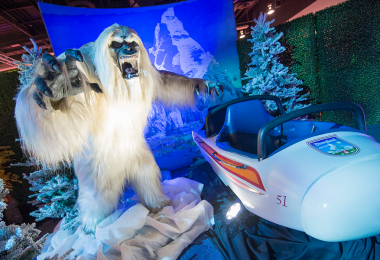Since 1955, guests of Disney Parks around the globe have journeyed through some of the world’s most “dangerous” rivers on Jungle Cruise, guided by a trusty skipper with a brave heart and a clever sense of humor. Tokyo Disneyland has just unveiled what might be the attraction’s biggest refurbishment to date with the debut of Jungle Cruise: Wildlife Expeditions, which provides an even more immersive adventure for guests through an increased use of music, interactivity, and a thrilling new nighttime experience.

“Our goal was to maintain the value of that classic Marc Davis ‘skipper experience,'” Walt Disney Imagineering (WDI) Executive Producer Kathy Rogers told D23. “We worked very hard to make it feel real and really wanted to connect you with the environment through the enhancements to each scene.”
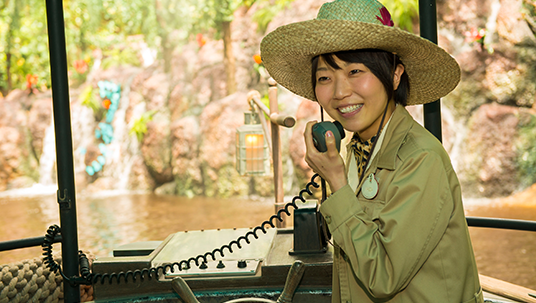
That connection is now forged in the queue, before guests board the boat. As Rogers notes, “When you go to Jungle Cruise at Disneyland [in California], all of the props in the queue tell you that you’re going on an adventure. At Tokyo Disneyland, the message wasn’t that strong.”
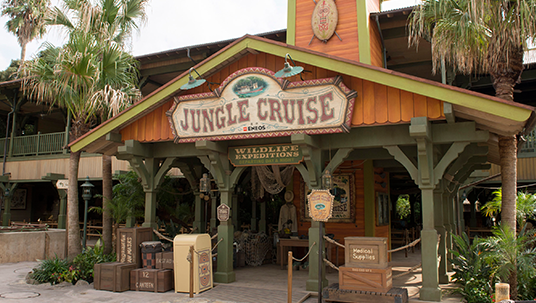
The Imagineers used the queue as an opportunity to introduce elements that will be featured on the cruise. Guests can examine jungle maps, listen to a radio show hosted by DJ skippers, and read thank-you letters—ostensibly written to skippers by past Jungle Cruise passengers—that are posted on a bulletin board that hangs in the attraction.
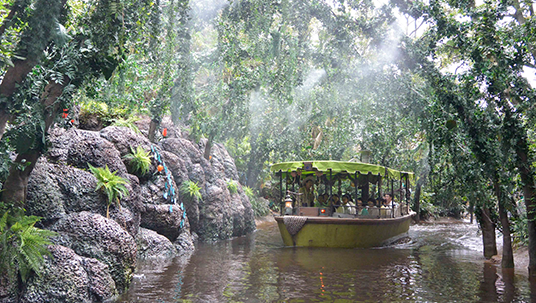
Show Writer Charlie Watanabe reveals, “We tried to plant various seeds in different places. The spiels on the boat are related to what the DJ skippers say over the radio. And what the DJ skippers say on the radio is related to the letters.” Since many guests are repeat visitors in Japan, it was important that they always find something new to discover.
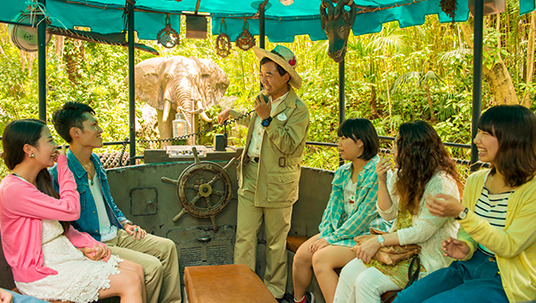
The Imagineers also wanted to strengthen the connection that guests have with the jungle itself and allow them to feel that they play a bigger part in the story. “One of the main stories in this new enhanced version of Jungle Cruise is that animal spirits help us through difficult or dangerous situations,” Watanabe explains.
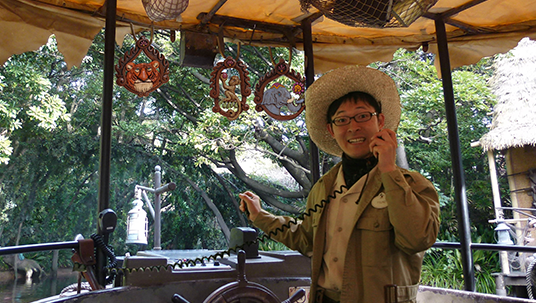
To summon those animal spirits, skippers rely upon three amulets, each representing a specific animal: The tiger symbolizes courage. The elephant stands for strength. And the monkey, of course, is for cleverness. The skipper and guests call upon the animal spirits by making that animal’s sound together during the cruise. Each skipper relates to one of the animal spirits, and the animal may reveal itself—creating the opportunity for multiple storylines that can be woven through the jungle, depending upon the performance of the skipper.
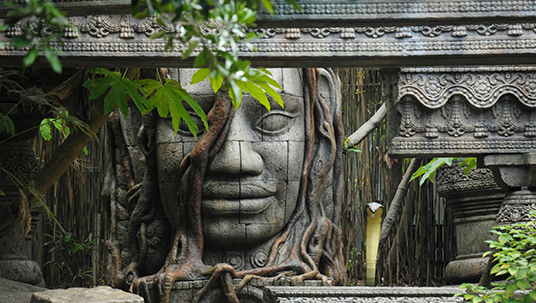
“We have two bas reliefs that show the connection of animals in the jungle and people together, so that all comes in harmony,” Rogers details for D23. When the “animal spirit” recognizes that everyone on the jungle adventure is also a friend of the jungle, the entire environment changes in a very short amount of time. “The stones rebuild themselves, the roots disappear, and the color and the whole temple comes to life,” Rogers continues.
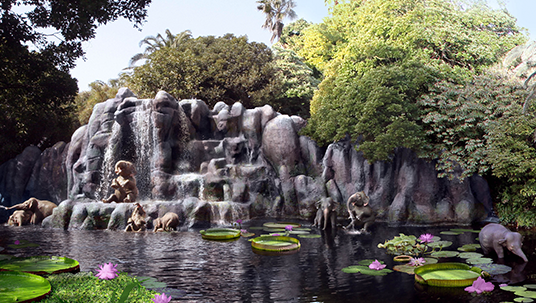
The soundtrack plays an important role in Jungle Cruise: Wildlife Expeditions. “It carries the emotion, whether it’s mystery, humor, or suspense,” Rogers says. This is the first time a Jungle Cruise has featured background music, and the enhancement also marks the debut of a new nighttime experience.
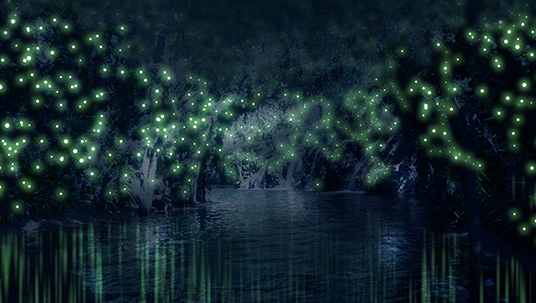
The after-dark cruises feature flickering fireflies, animal eyes that can be seen illuminated in the bushes, and, of course, moonlight.
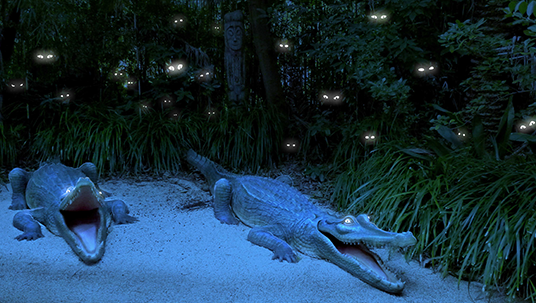
The goal, according to Rogers, was to make these enhancements feel “like they always were there and always belonged there,” as well as to maintain the intent of Marc Davis’ humor and the classic Jungle Cruise puns. Jungle Cruise: Wildlife Expeditions marks the first time in the 31-year history of Tokyo Disney Resort that a “show script” has been written originally in Japanese, by a Japanese writer.

“In the past,” Rogers recounts, “we’ve always taken the U.S. puns and then translated them into Japanese. And our humor is totally different from the Japanese cultural humor, so for the first time we were able to write puns and humor that the Japanese culture can relate to in the same way that we relate to our puns.”
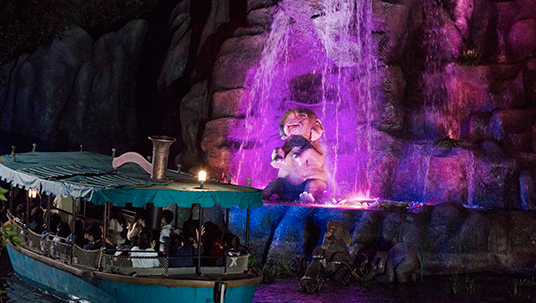
Watanabe shares an example: “I was following tweets—#JungleCruise—and I’ve seen a joke already copied. The Japanese joke is, ‘Those on the right hand side, please enjoy the “expression” of the water. Those on the left, enjoy the “expression” on the rocks. And in the middle, enjoy the [facial] expression of the captain.'”
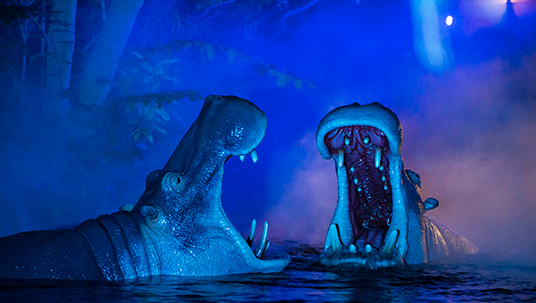
“That is one of ‘the backside of water’ jokes for Japanese guests,” Rogers explains, referencing the beloved joke U.S. guests associate with Schweitzer Falls (named winkingly, as Disney fans all know, for Dr. Albert Falls).
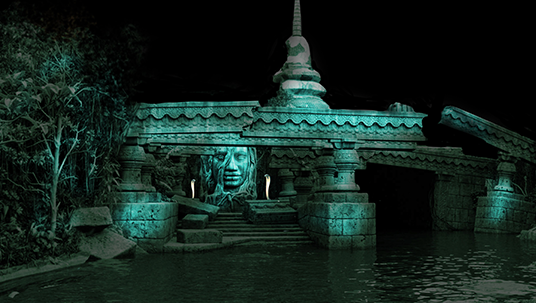
According to Rogers and Watanabe, the skippers have embraced the changes, particularly the interactive dialogue. “They always played an important role but they didn’t feel like they were playing an important role,” Watanabe admits. Rogers agrees, adding, “I think giving the skipper the tools to feel comfortable with and the story to tell helps the skippers deliver their lines. It’s their story and when you deliver it like it’s your story, then the guests respond. It’s contagious.”
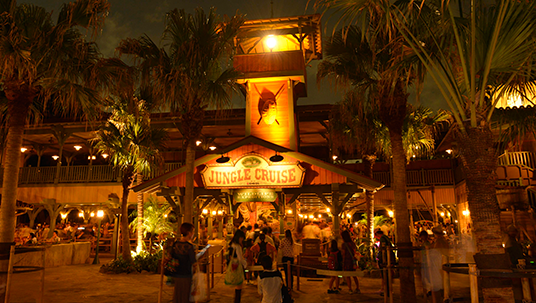
Both agree that they believe the enhanced Jungle Cruise: Wildlife Expeditions is the immersive experience they set out to create. Watanabe refers to the important message found in the new show. “The last message the skipper says,” Watanabe points out, “is ‘Before we conclude, I hope that you stay a friend of the jungle and be nice to nature.’ Everything leads to that—visually, intellectually, and aurally—and I hope that they maintain that idea that the jungle is a really good place.”
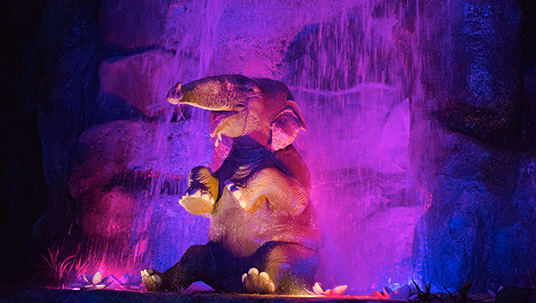
D23 can’t help but agree that this jungle is a really good place, indeed.




